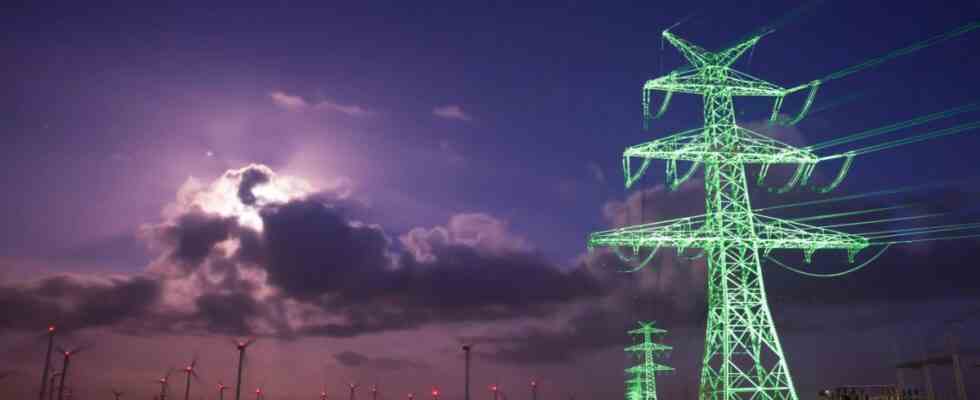Werner Hoyer is self-confident. It doesn’t matter which strategy the EU heads of state and government ultimately agree on: “We will be part of it”, said the President of the European Investment Bank (EIB) on Thursday in Brussels. At a summit meeting at the end of next week, the 27 top politicians will discuss how the EU should react to the US government’s massive green subsidy package. And bank boss Hoyer firmly assumes that his institute will play a role here.
The EIB is one of the largest banks in the world – but relatively unknown outside of financial and political circles. The Luxembourg money house is the EU development bank – the institute, founded in 1958, belongs to the 27 member states and supports the construction of wind farms, railways or data lines with cheap loans. The EIB also makes money available to small companies, and the bank, with its 4,000 employees, is one of the most important financiers of climate protection projects worldwide.
Former FDP Minister of State Werner Hoyer has been at the top since 2012. However, the 71-year-old’s term of office expires at the end of the year – and in his last few months at the post, Hoyer is likely to see his bank’s tasks being expanded again. Reason is that Inflation Reduction Act (IRA), a US law that lavishly promotes the green transition of the economy. Some of the planned subsidies are linked to the fact that the eco-products have been manufactured in the United States. Because President Joe Biden primarily wants to support American factories. This disadvantages corporations in Europe that want to export goods to the USA. The companies could therefore relocate plants and investments to America.
For this reason, the EU Commission is proposing that manufacturers of green products such as wind turbines or batteries also in Europe more support receive. On Wednesday, the head of the authorities, Ursula von der Leyen, presented a strategy paper that will be discussed at the EU summit next week. Accordingly, the member states should be able to pay more subsidies more easily. In addition, the governments should reallocate EU funding in favor of the green industries. In addition, the Commission has announced that it will increase the Invest-EU programme to consider. This is where Hoyer’s EIB comes into play.
Germany also benefits
Because with Invest-EU, the Commission provides the Luxembourg development bank with guarantees. These guarantees enable the EIB to support companies’ riskier projects. So more money for Invest-EU means that the EIB can provide more cheap loans or capital injections to manufacturers of green products.
Von der Leyen also promises to present the concept for a European sovereignty fund by summer. This EU pot of money is intended to promote important industrial projects, but the details are open – such as the question of where the Commission will get the money from. EU Council President Charles Michel encouraged in a guest post announced two and a half weeks ago that the EIB should be behind this fund. According to Michel’s plans, the fund is to support investments in industry, but not in the form of subsidies, which are then lost, but through repayable loans or capital injections. In this way, the funds can be used again and again. Shortly after Michel, Hoyer also promoted such models in his own opinion piece – and pointed out that the EIB had a lot of experience with this approach. However, it is unclear whether the Commission and the heads of state and government will ultimately agree on this concept.
Hoyer also reported on the past financial year on Thursday. Accordingly, the EIB concluded financings of over EUR 72.5 billion. The institute always covers only part of the financing with its cheap loans, the rest comes from other banks and investors. Therefore, this sum has enabled investments of 260 billion euros, as estimated by the EIB. Most of the money went to projects in Italy, Spain, France and Germany. However, if you put the amounts in relation to economic output, Greece benefited the most, ahead of Cyprus and Poland. In Germany, the bank supported, among other things, wind farms, the modernization of power grids and the construction of a battery material factory.
The goals are met
Around 58 percent of all financing went to climate-friendly projects. In 2019, the bank set itself the goal of exceeding the 50 percent threshold by 2025 – this has now been achieved much earlier. Another goal is to enable one trillion euros in investments in climate and environmental protection between 2021 and 2030, i.e. 100 billion euros per year. This target was exceeded in 2021 and 2022.
The next big challenge could be coming up very soon: the answer to Biden’s IRA.

